The Audubon Observer, December 2022
|
|
||||
AUDUBON’S CHRISTMAS BIRD COUNT
Here's how the annual CBC works: birders fan out to specified locations within an established 15-mile-wide circle in the local area and count every single bird they see or hear from dawn until dusk. Some even start before dawn, listening for owls and other nocturnal species to add to the count. The results of the annual counts are uploaded to Audubon's extensive database, providing important data about bird population trends, and helping to inform avian conservation efforts.
However, in order to have your tallies included as part of the official Jacksonville Christmas Bird Count, you must be registered as a member of the Jacksonville CBC team. If you would like to participate, either as part of a count team assigned to a specific area or at your home counting birds at your feeders or in your yard, please get in touch with count leader Jeffrey Graham at ladodgers098@gmail.com as soon as possible. Other CBCs in the Northeast Florida area include the Clay County East CBC scheduled for 12/17/2022 (contact Steve Raduns at steveraduns@gmail.com), the St. Augustine CBC scheduled for 12/18/2022 (contact William McNee at billmcnee@gmail.com) and the Matanzas CBC scheduled for 1/2/2023 (contact Sue Killeen at mypuffins@gmail.com). Click here to see an interactive map of all of the Audubon Christmas Bird Count circles happening in the western hemisphere. Audubon’s Christmas Bird Count is one of the largest and longest-running citizen science efforts in the world. A special thanks to all of the dedicated volunteers who give up an entire day during their busy holiday season to count birds in all kinds of weather. We at Duval Audubon Society are thrilled to participate in this long-standing Audubon tradition. Learn more about the Christmas Bird Count at audubon.org/conservation/join-christmas-bird-count. WINTERING DUCKS IN NORTHEAST FLORIDA Northeast Florida is a great wintering area for many duck species that breed across the northern US and Canada, but local birders have reported fewer ducks over the last few years. Well, we’re happy to report that more ducks seem to be back in our area this winter. The reasons are unclear: possibly weather patterns, food availability, a good breeding season, and other causes, but wintering ducks are always a welcome sight.
Good locations in the Jacksonville area for possibly finding a variety of duck species at this time of year include Spoonbill Pond at the northern end of Big Talbot Island, the Big Island Swamp Lake on the west side of the St. Johns Town Center, Perdue Pond Wildlife Sanctuary on Airport Center Drive East and Perdue Road, and the lakes and ponds at the UNF Nature Trails. In Clay County, you might want to visit Goldhead Branch State Park and Lake Geneva in Keystone Heights, Wells Lake on Wells Road at Corporate Way, the retention pond behind the Walmart Supercenter on Blanding Blvd, and the retention pond on Wells Road across from Bestbet on US 17.
In addition to these locations, you might find cool ducks in any retention pond in neighborhoods and subdivisions, so don’t forget to look there when you’re out and about – you never know what you might find! YELLOW-RUMPED WARBLER ID This time of year, birders on the hunt for unusual birds often end up spotting dozens if not hundreds of Yellow-rumped Warblers foraging in trees, bushes, and even on the ground. Their constant chek calls (some have likened it to the sound of someone sucking on a pacifier over and over) are instantly recognizable once you become familiar with them.
Both subspecies are large, full-bodied warblers with a stout black bill, long straight tail, and dark legs. During the winter months, Yellow-rumped Warblers of the Myrtle subspecies have pale grayish-brown plumage on the head, cheek, and nape, a white throat, and varying amounts of dark streaking on the breast, usually with some patchy yellow coloring on the sides of the breast. The belly and undertail coverts are also white. Two white wing bars are sometimes (but not always) obvious, and they also typically have a broken white eye ring.
Next time you’re out birding in Northeast Florida (at least this time of year), we can almost guarantee that you will see at least one if not many of these active warblers, affectionally known as “butter-butts.” UPCOMING ACTIVITIES Here's what's happening this month:
Best wishes for a Happy Holiday Season from all of us at Duval Audubon! 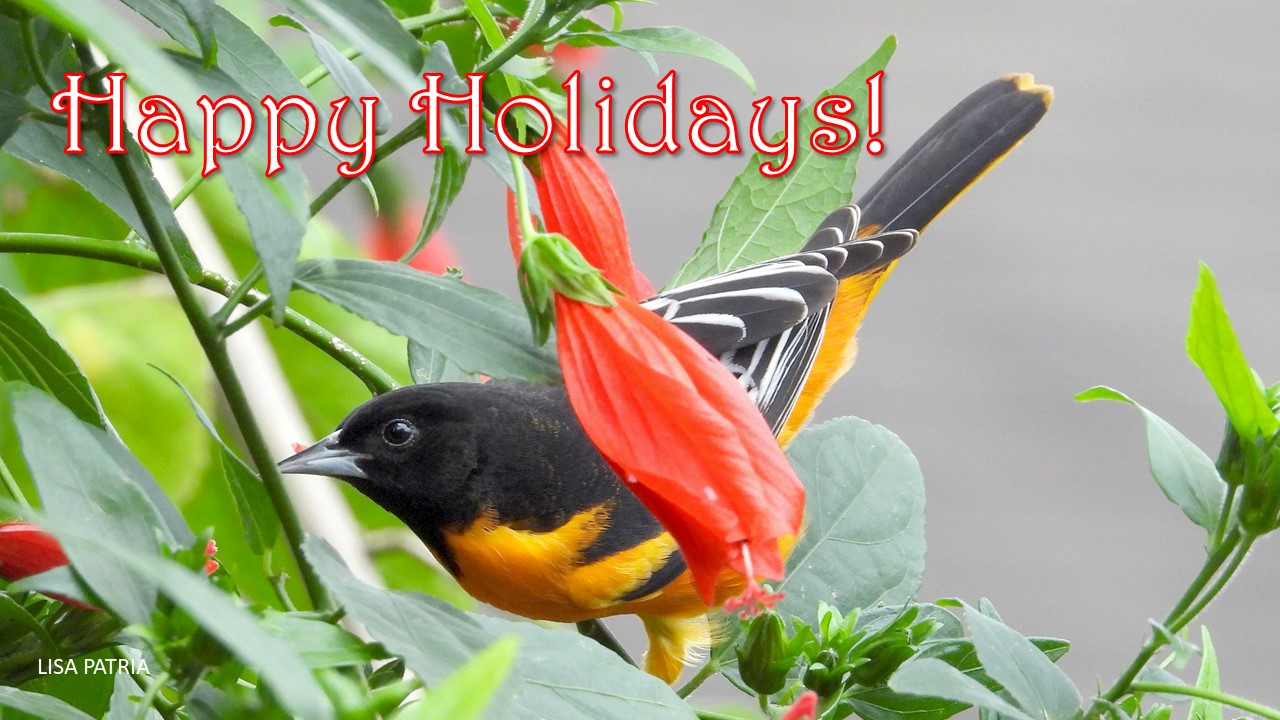 All content by Carol Bailey-White unless otherwise noted. Duval Audubon Society, Inc.
|
||||

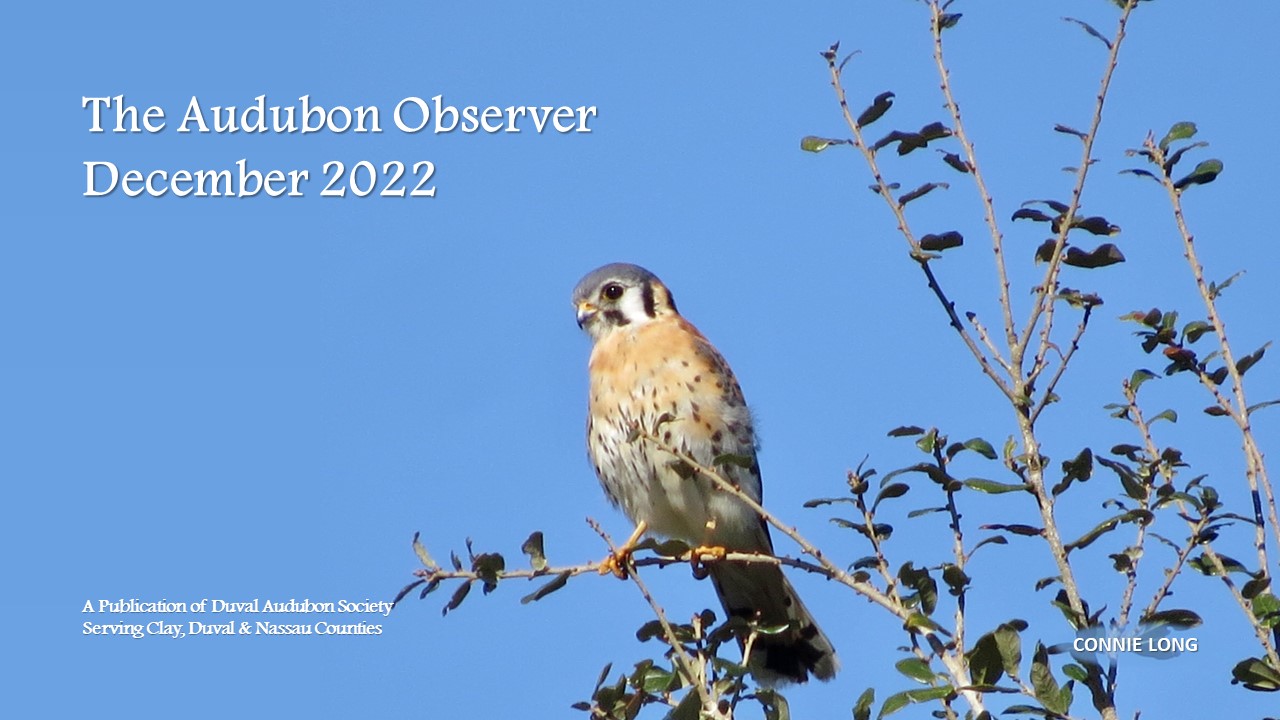
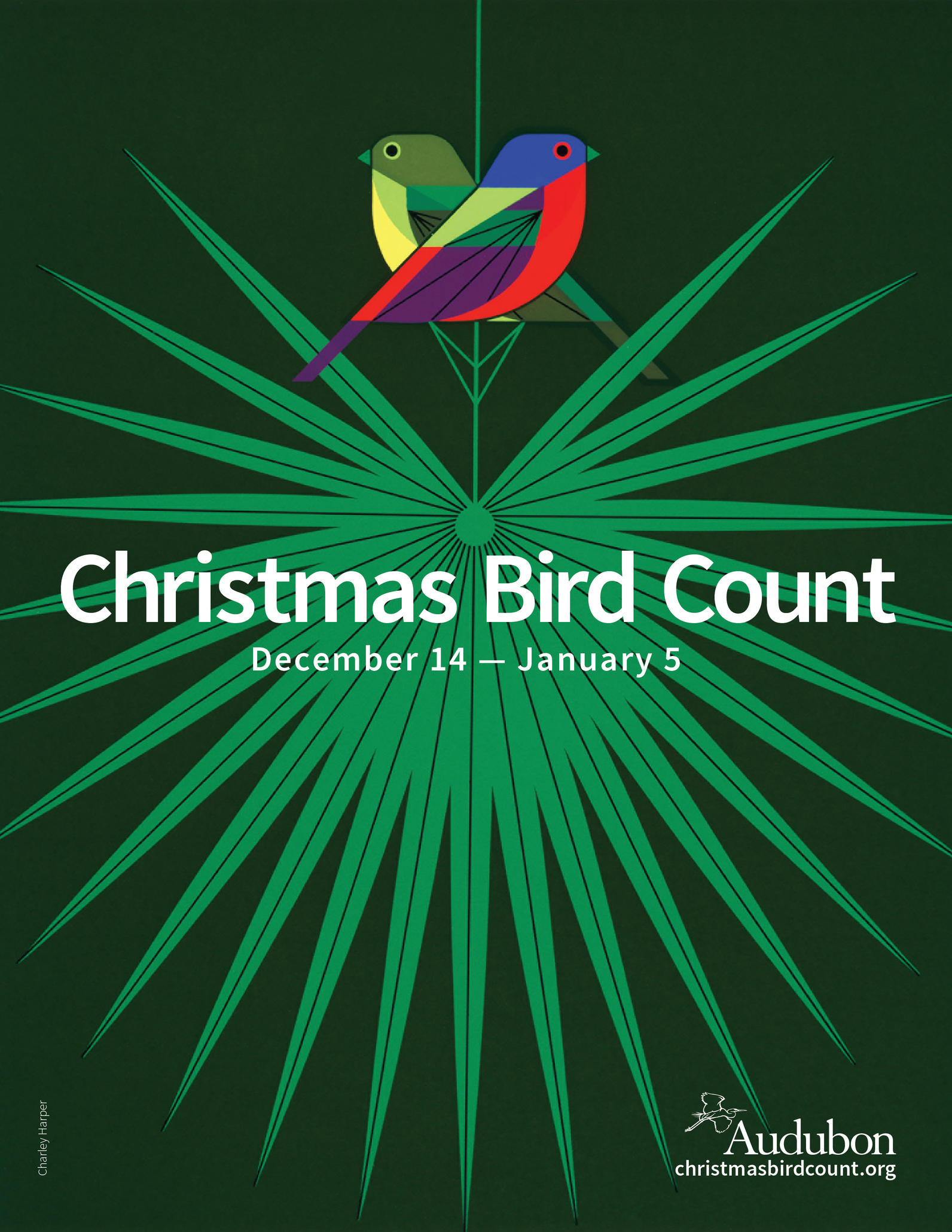 This year marks the 123rd anniversary of the
This year marks the 123rd anniversary of the 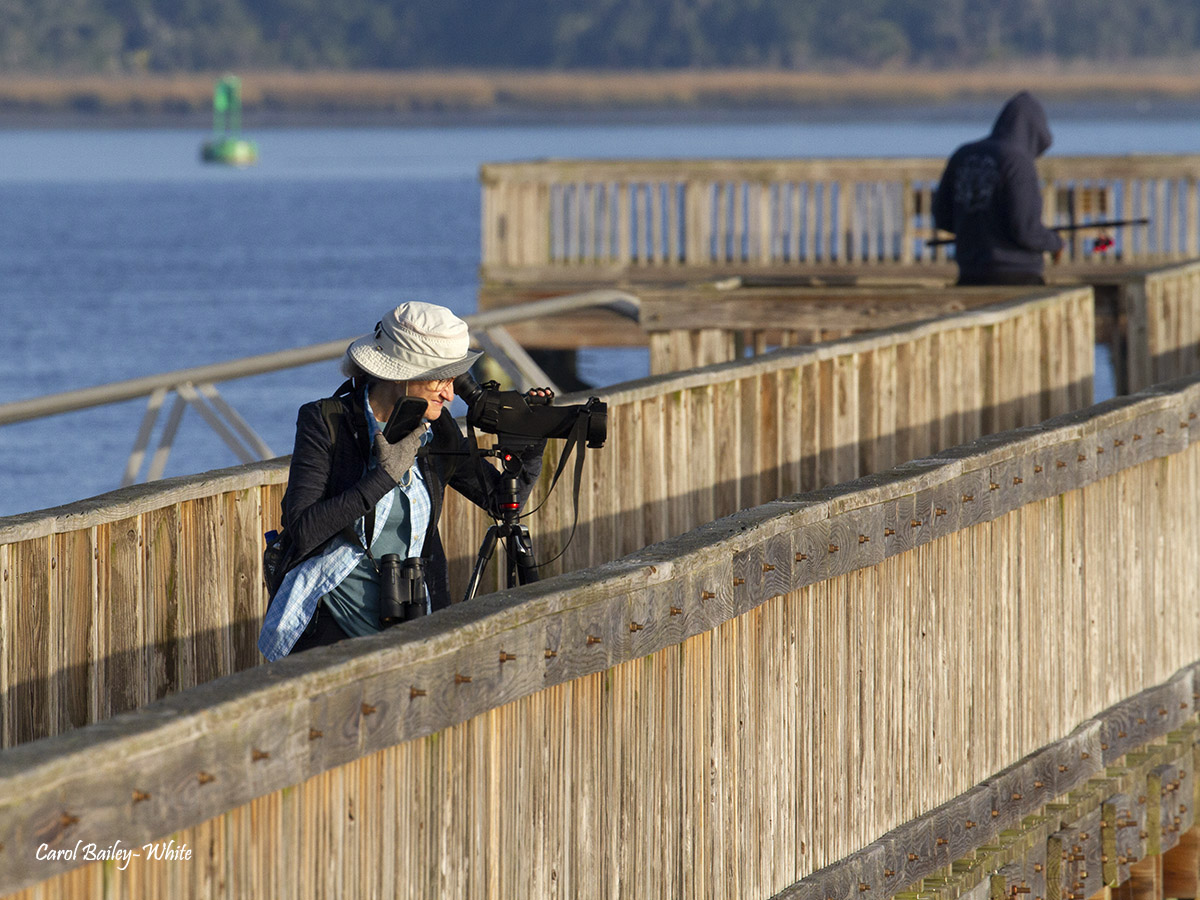 The Jacksonville CBC is scheduled for Monday, December 26th and Duval Audubon Society Field Trips Director Jeffrey Graham is leading this year’s count. The area for the Jacksonville count is a circle encompassing the Arlington area, parts of the beaches, Mayport, Talbot Islands, Yellow Bluff, and Pumpkin Hill State Park. Novice birders are welcome; we can pair you with more experienced birders. If you live within the count area but can’t participate on a team, counting birds at feeders or even in your yard would provide valuable data as well.
The Jacksonville CBC is scheduled for Monday, December 26th and Duval Audubon Society Field Trips Director Jeffrey Graham is leading this year’s count. The area for the Jacksonville count is a circle encompassing the Arlington area, parts of the beaches, Mayport, Talbot Islands, Yellow Bluff, and Pumpkin Hill State Park. Novice birders are welcome; we can pair you with more experienced birders. If you live within the count area but can’t participate on a team, counting birds at feeders or even in your yard would provide valuable data as well.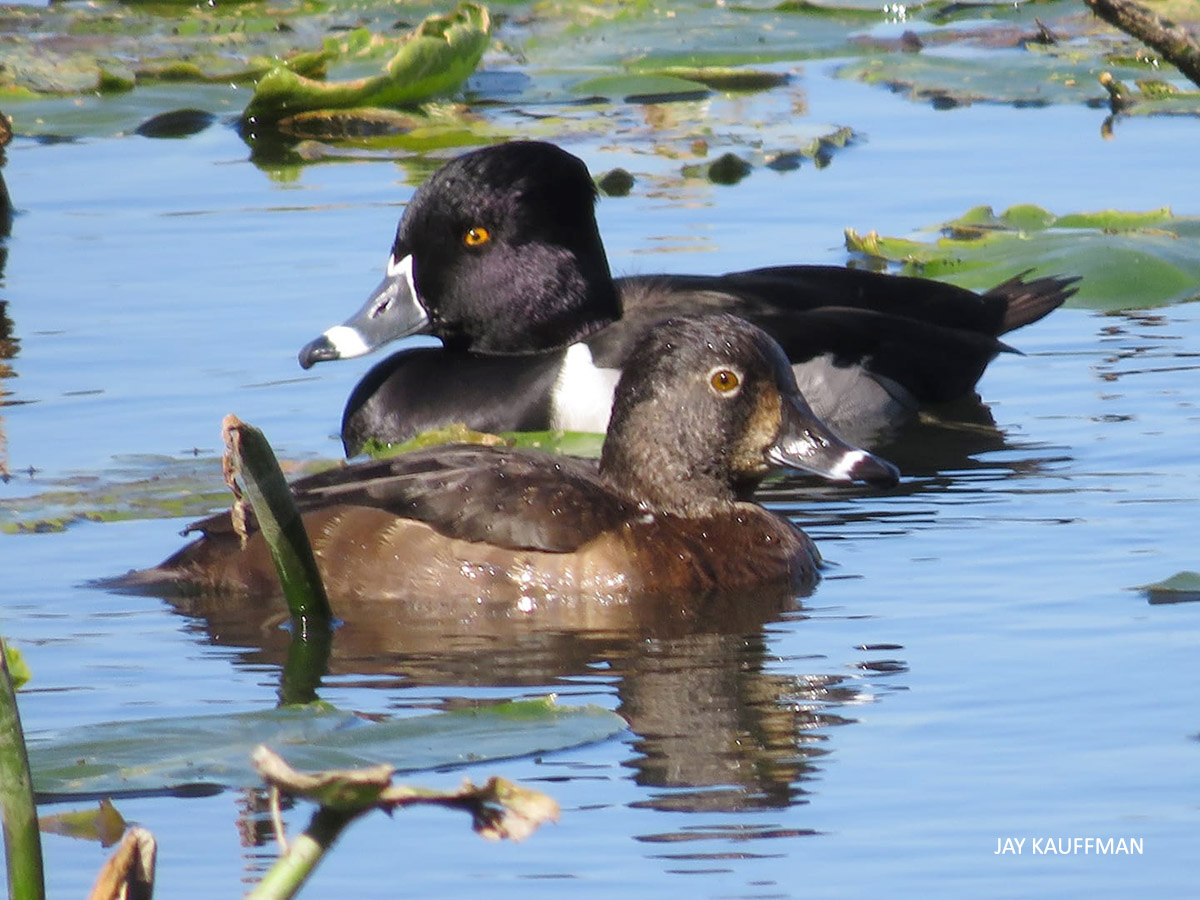 Ring-necked Ducks
Ring-necked Ducks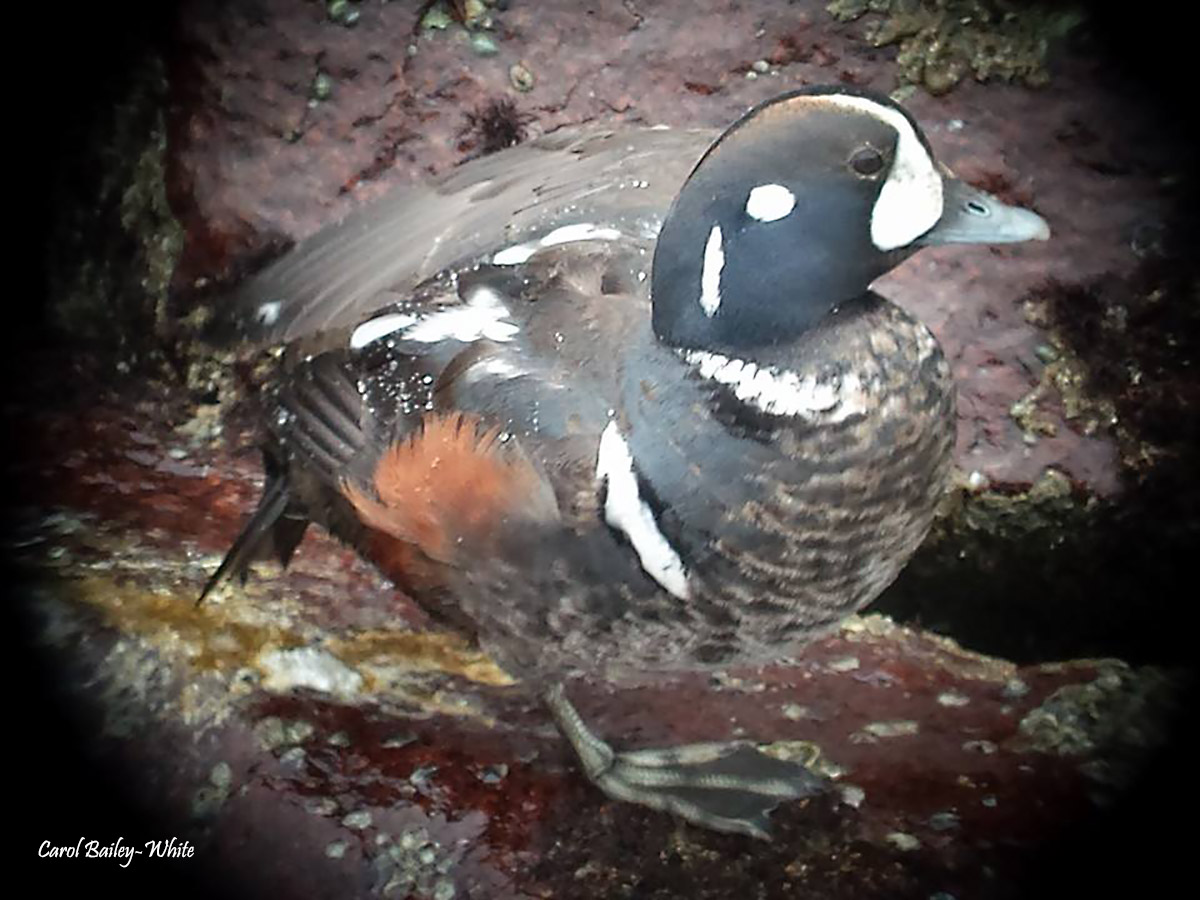 Nassau County’s
Nassau County’s 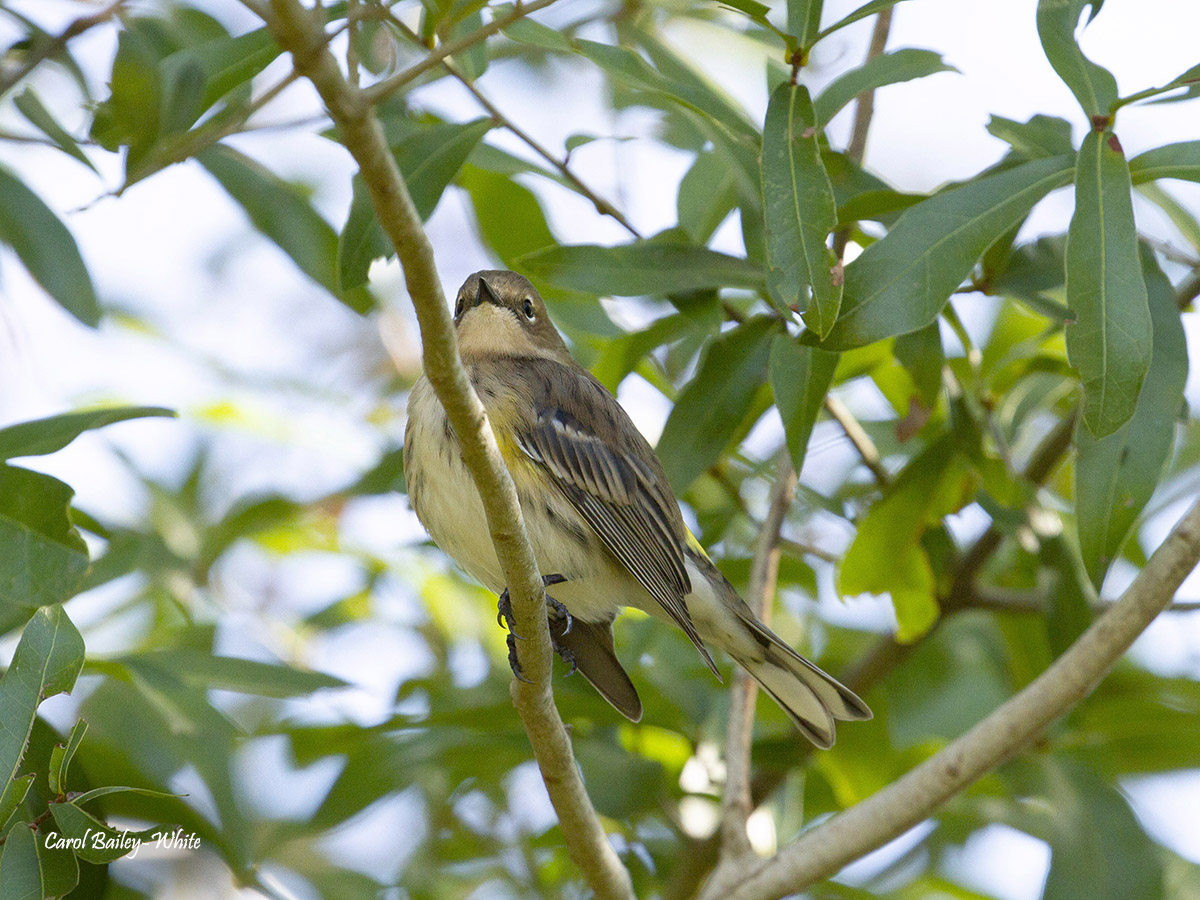 But while their calls are easy to recognize, there’s quite a bit of variation in their appearance, so even the most experienced birder might get confused at first (at least until they call, or turn around to show their characteristic yellow rump spot). This is also one of those warbler species whose plumage changes dramatically from breeding season to non-breeding season. As these birds are only in our Northeast Florida area during the winter (non-breeding) months, we don’t get to see them at their brightest, most brilliant colors, but since there are so many of them around, it pays to learn to recognize them quickly to differentiate them from any more unusual species that might be foraging with them.
But while their calls are easy to recognize, there’s quite a bit of variation in their appearance, so even the most experienced birder might get confused at first (at least until they call, or turn around to show their characteristic yellow rump spot). This is also one of those warbler species whose plumage changes dramatically from breeding season to non-breeding season. As these birds are only in our Northeast Florida area during the winter (non-breeding) months, we don’t get to see them at their brightest, most brilliant colors, but since there are so many of them around, it pays to learn to recognize them quickly to differentiate them from any more unusual species that might be foraging with them.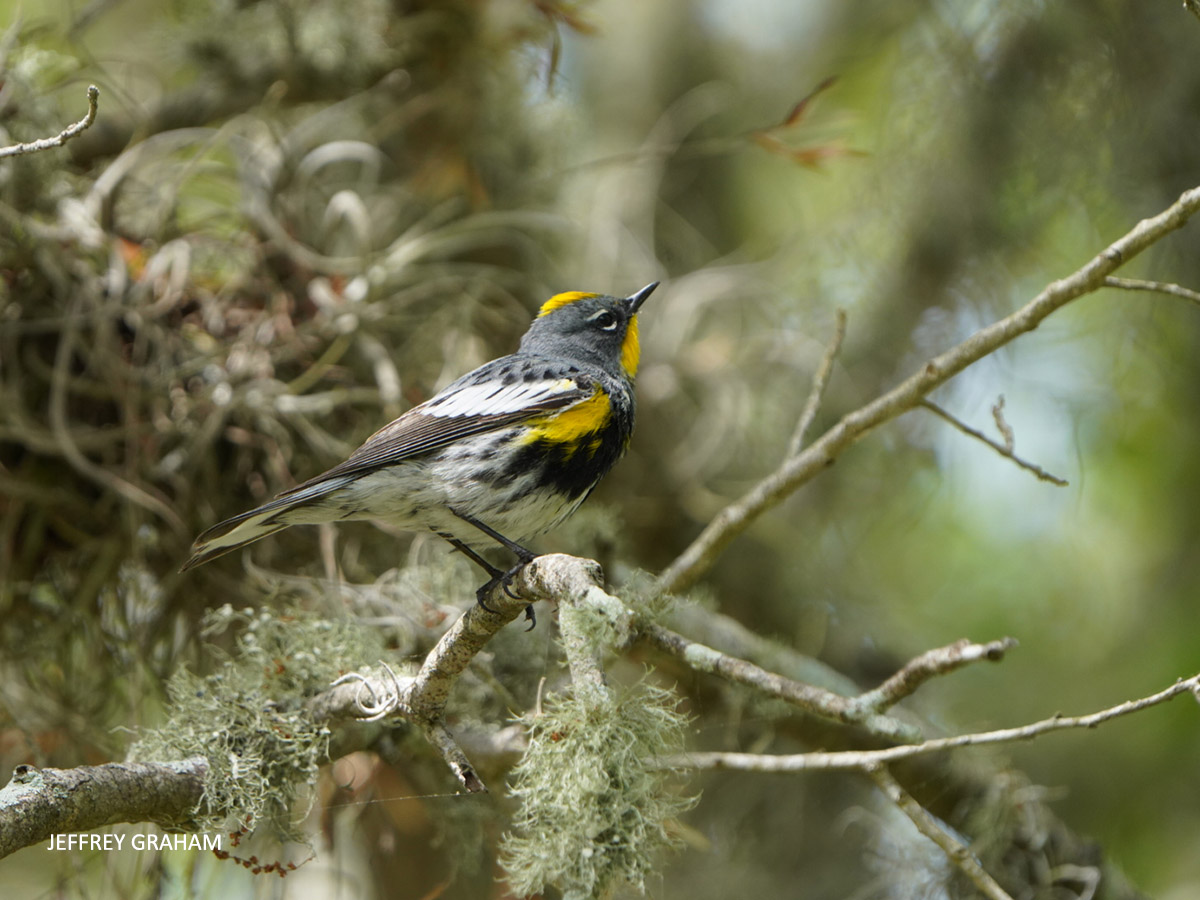 And, to make things even more confusing, there are two distinct subspecies of the Yellow-rumped Warbler: the Myrtle and the Audubon’s. The vast majority of Yellow-rumps in our area during the winter months are of the Myrtle subspecies, but it’s possible to see both during migration, and in the spring, both are already starting to develop their more colorful breeding plumage.
And, to make things even more confusing, there are two distinct subspecies of the Yellow-rumped Warbler: the Myrtle and the Audubon’s. The vast majority of Yellow-rumps in our area during the winter months are of the Myrtle subspecies, but it’s possible to see both during migration, and in the spring, both are already starting to develop their more colorful breeding plumage. In their breeding plumage, male Myrtle Yellow-rumps develop a striking black mask, and the grayish brown plumage becomes a clean dark gray, but they still have the white throat. The Audubon’s subspecies has a bright yellow throat that makes it easily distinguishable from the Myrtle variety, but males and females of both subspecies all sport the characteristic yellow rump spot that gives them their name.
In their breeding plumage, male Myrtle Yellow-rumps develop a striking black mask, and the grayish brown plumage becomes a clean dark gray, but they still have the white throat. The Audubon’s subspecies has a bright yellow throat that makes it easily distinguishable from the Myrtle variety, but males and females of both subspecies all sport the characteristic yellow rump spot that gives them their name.